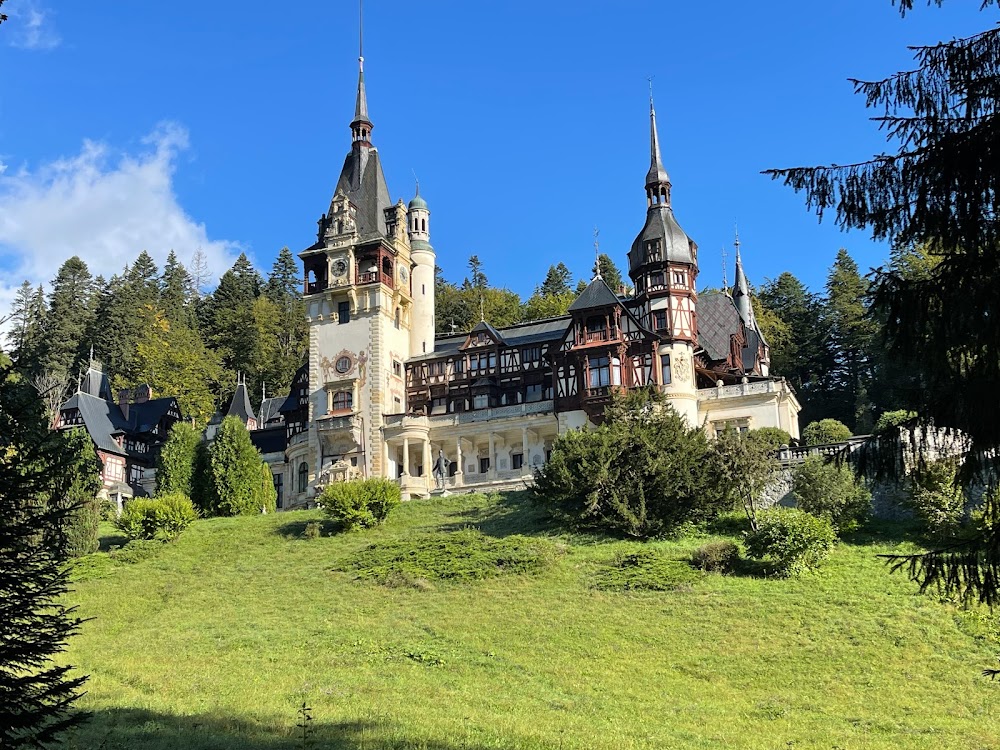Fortified Church of Hărman (Biserica fortificată din Hărman)
Overview
The Fortified Evangelical Church of Hărman, nestled in the picturesque Brașov County of Romania, is a breathtaking example of medieval architecture and historical resilience. Its origins date back to the 13th century, when it was established by Saxon colonists from the Rhineland. These settlers brought with them unique architectural styles and techniques that have left a lasting imprint on the structure.
Initially built as a Romanesque basilica between 1240 and 1250, the church featured a straightforward yet robust design, complete with a nave, aisles, and a well-defined altar. However, the increasing threat of invasions, particularly from the Ottoman Empire, highlighted the need for fortified churches. In response, the church underwent significant transformations to enhance its defensive capabilities.
The fortification process began in the 15th century, resulting in extensive modifications aimed at bolstering the church's defenses. A formidable stone wall, approximately 12 meters high and 4 meters thick, was constructed around the church, providing essential protection for villagers during sieges or attacks.
Within this perimeter, seven towers were integrated into the wall, each serving distinct defensive and operational purposes. Notably, the prominent bell tower also acted as a watchtower, featuring narrow windows that allowed defenders to monitor the surrounding area and fend off approaching threats. These towers not only strengthened the church’s defenses but also facilitated communication and storage of resources during times of crisis.
Inside the fortified walls, the community found refuge in various storerooms and small chambers designed for prolonged sieges. The church grounds also included a well, ensuring access to fresh water—an essential resource during times of conflict. The thoughtful design of these fortifications made the church a formidable stronghold against invaders.
The architectural evolution of the church continued beyond its initial fortification. In the 16th century, Gothic enhancements were added, including buttresses to support the walls and new vaulted ceilings that enhanced both strength and beauty. Despite these modifications, the church retained its original Romanesque structure, creating a harmonious blend of two distinct architectural styles.
Beyond its defensive role, the church served as a vibrant center of community life for the Saxons of Hărman. It housed a notable collection of religious artifacts, including a late Gothic wooden altar from 1460, adorned with intricate depictions of saints and biblical scenes. This altar remains a focal point within the church, exemplifying the exceptional craftsmanship of the era.
Remarkably well-preserved through the centuries, the church has benefited from ongoing maintenance and restoration efforts, with the most significant restoration occurring in the 20th century. These efforts have ensured that both the church and its fortifications remain intact for future generations. Visitors can appreciate the pristine condition of many original features, such as frescoes, wooden sculptures, and ironwork.
Today, the Fortified Evangelical Church of Hărman stands not only as a remarkable architectural landmark but also as a symbol of the enduring spirit and cultural heritage of the Saxon community in Transylvania. Visitors are offered a captivating glimpse into a bygone era, where faith and resilience coexisted harmoniously.
This historical site continues to attract history enthusiasts, architecture lovers, and tourists from around the globe. As a vital piece of living history, the church bridges the present with a rich and tumultuous past that has significantly shaped the region. Whether you're exploring its fortified walls or admiring its exquisite details, the Fortified Evangelical Church of Hărman promises an unforgettable experience steeped in history.







